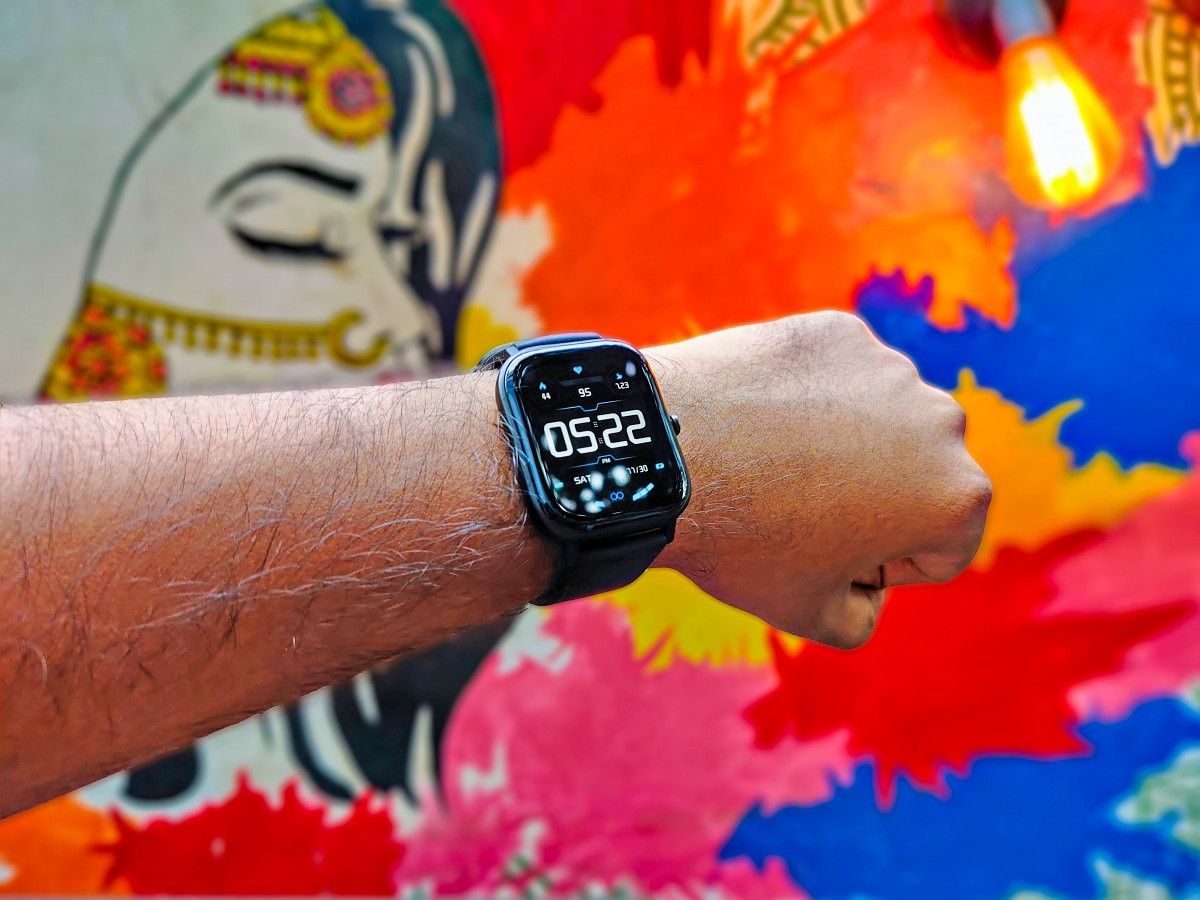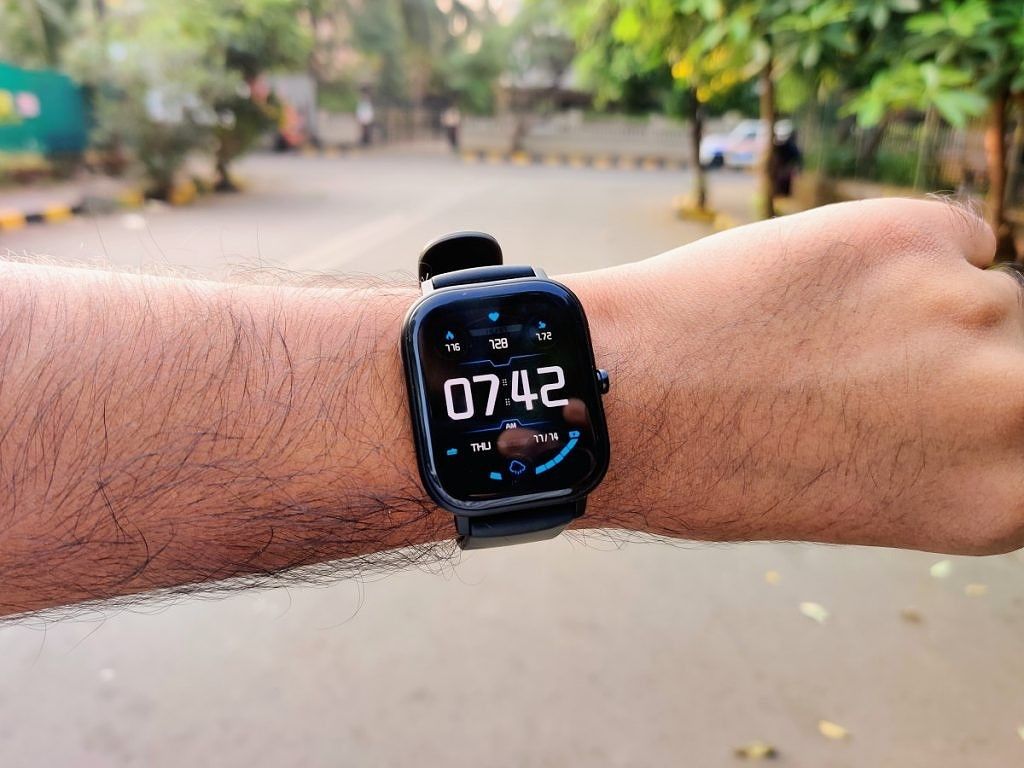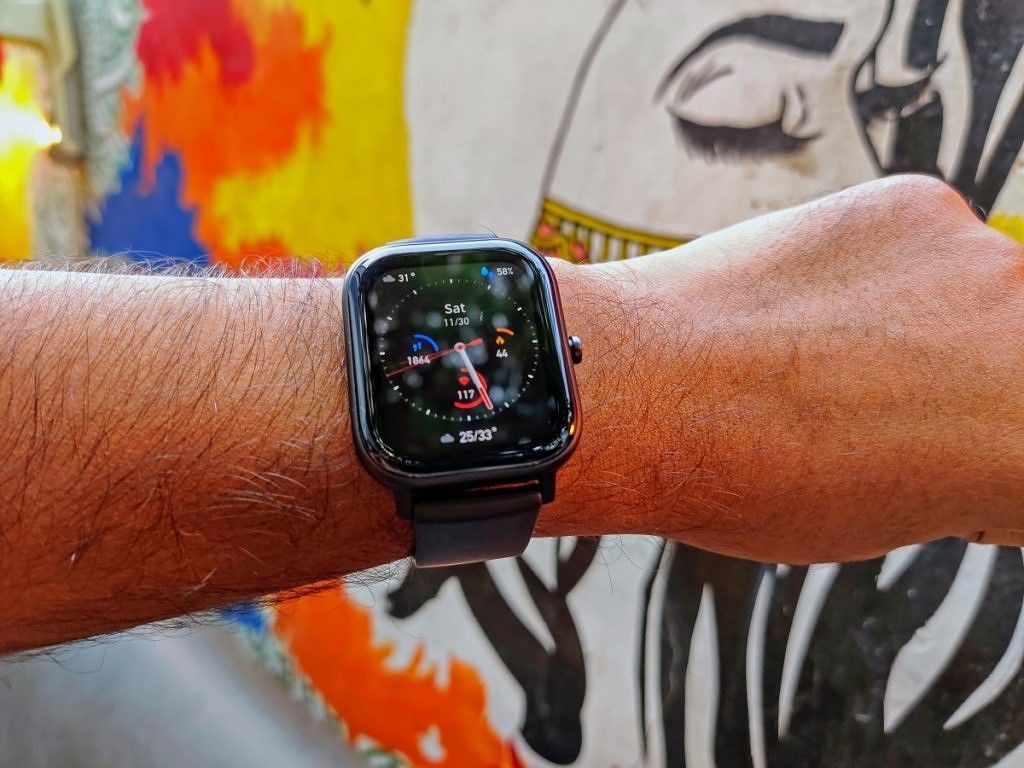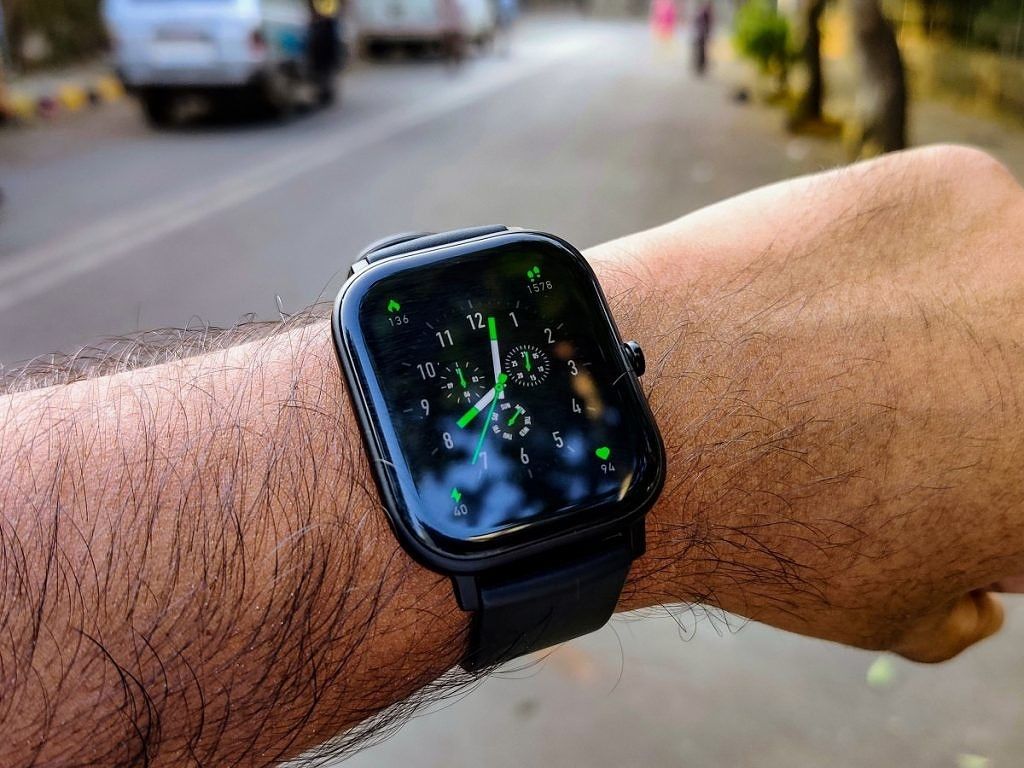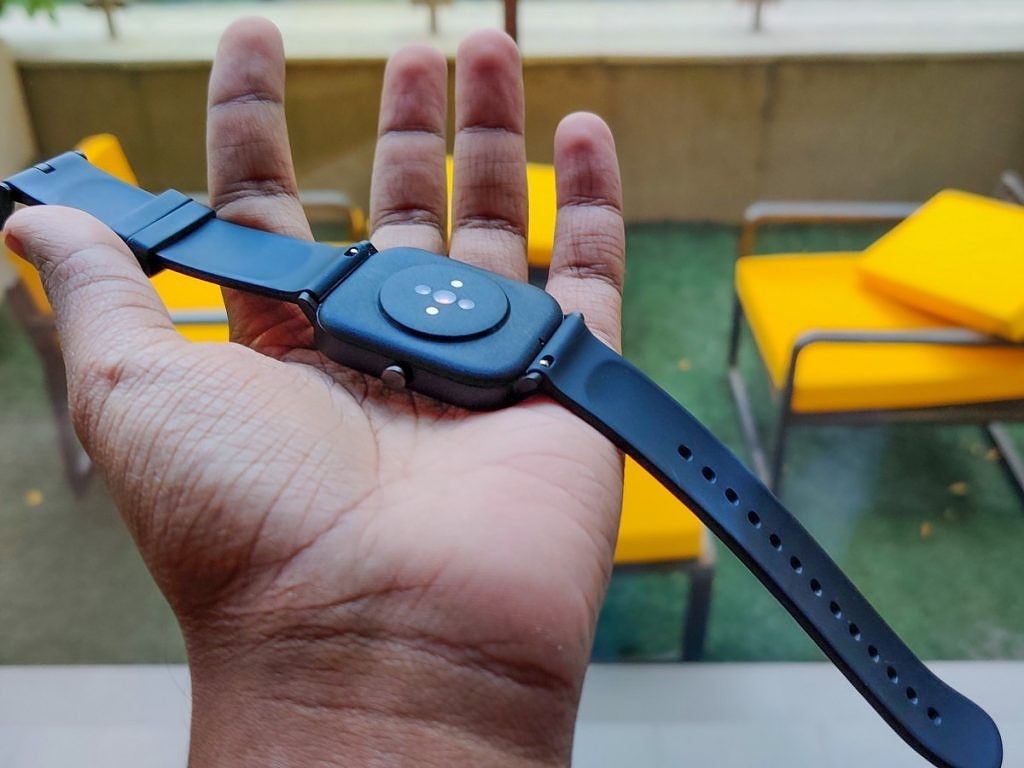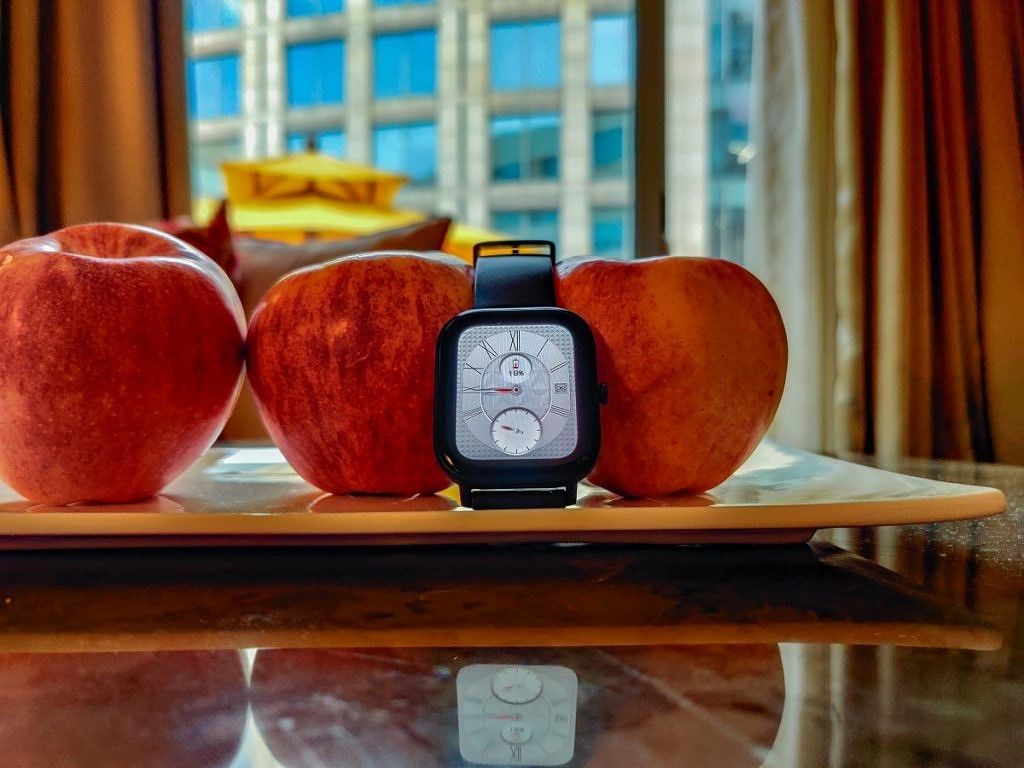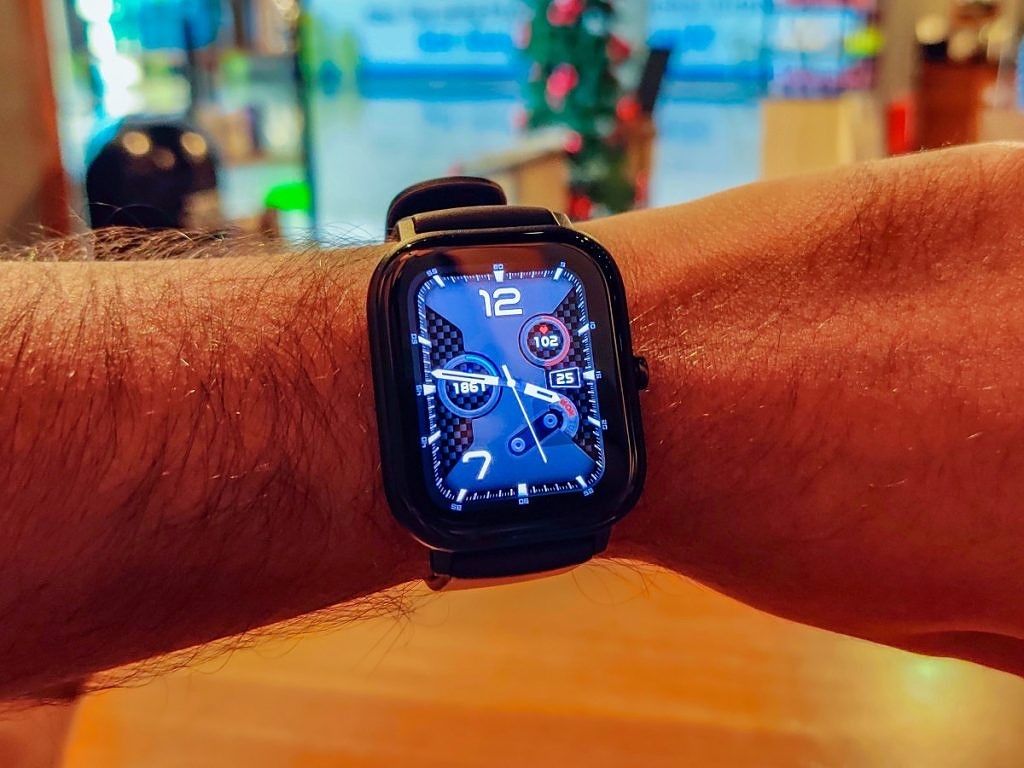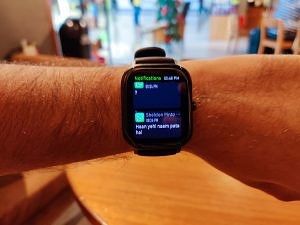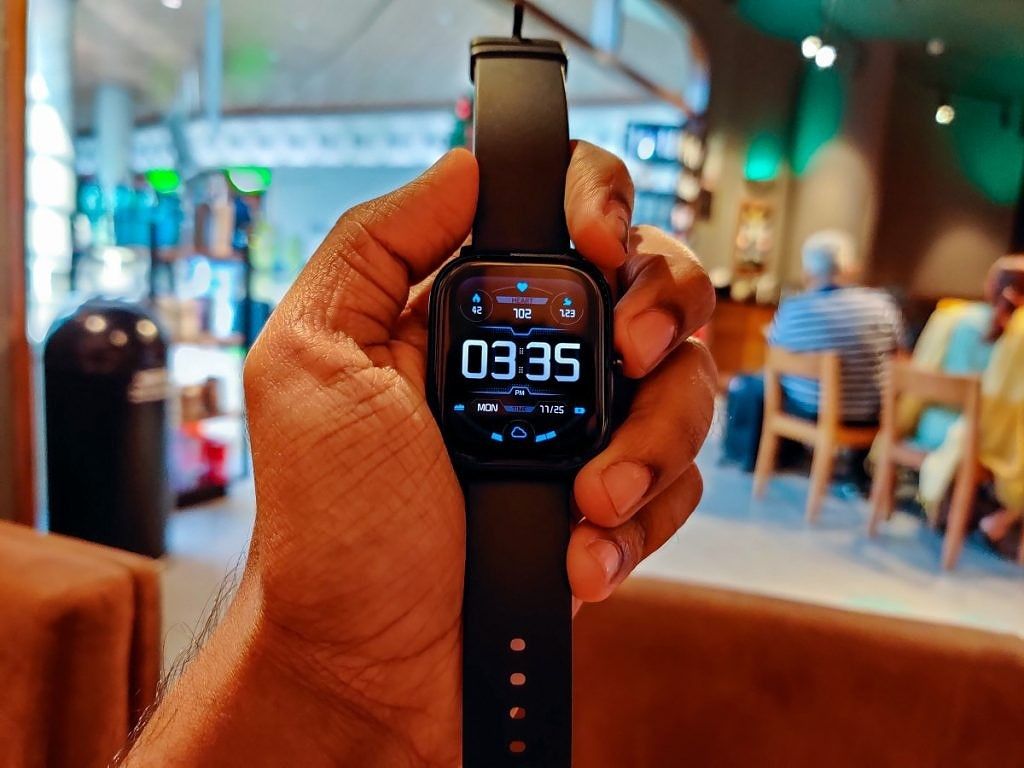Huami is one of the largest wearable device companies in the world, claiming a global market share of over 17% through its Amazfit brand. The wearable space in markets like India has really grown in the past few years, riding on the back of cheap yet reliable smart fitness trackers like Xiaomi's Mi Band lineup. These smart fitness trackers get the "fitness tracking" bits just right, and because of their pricing, they are among the top recommendations for users who are just starting out on the path of fitness and exercise. But what if you wanted a smart fitness tracker that had some more characteristics of a conventional wristwatch and perhaps some of the smartness of a smartwatch too? This is where devices like the Huami Amazfit GTR and Amazfit GTS come in.
The Huami Amazfit GTS was launched in China in August this year, and subsequently, the device made its way to the Indian market in October. Both the Amazfit GTS and the Amazfit GTR (which Tushar recently reviewed) sit in between two device categories. Calling them mere fitness trackers would be doing the GTS and GTR a gross injustice, and there is not enough "smart" within these two to call them smartwatches either. In this review, we'll explore how the Amazfit GTS functions as a fitness tracker and as a smart-ish watch, and how it sizes up against its sibling, the Amazfit GTR.
Amazfit XDA Forums || Buy Amazfit GTS from Amazon.in
|
Specs |
Amazfit GTS |
|---|---|
|
Size and weight |
|
|
Materials |
Aluminum alloy for sides and body, polymer material for the bottom cover |
|
Wrist band |
Silicone, 20mm |
|
Compatibility |
Android 5.0+, iOS 10.0+ |
|
Display |
1.65" AMOLED, resolution 348 x 442, 341ppi, 100% NTSC, Corning Gorilla Glass 3 |
|
Connectivity |
Bluetooth v5 BLE |
|
GPS |
GPS + GLONASS |
|
Sensors |
|
|
NFC payments |
No |
|
Battery |
220mAh |
|
Water Resistance |
5 ATM |
Note: Amazfit has loaned us the Amazfit GTS (Obsidian Black). This review is after more than four weeks of daily usage.
Design
The Huami Amazfit GTS looks like the Apple Watch at first glance. And unsurprisingly, "Is that the Apple Watch?" has been the most frequently asked question whenever I ventured out with this watch on my wrist. However, the similarities exist only for the first few fleeting moments, as a keener observation would reveal that the only bit that the Amazfit GTS shares with the Apple Watch is the rounded-square shape of the display.
The Amazfit GTS comes with a metallic shell, made from a lightweight aluminum alloy, that forms the main body of the smartwatch/fitness tracker. The bottom of the watch has a polymer cap, which when combined with the relatively small 220 mAh battery, contributes to the meager 25g weight of the main watch unit. This is in contrast to the 36g weight of the aluminum variant of the 47mm Amazfit GTR and the 31g weight of the lightest Apple Watch 5. The lightness of the watch gets more noticeable when the bands are accounted for, as the Amazfit GTS comes with simple silicon bands, unlike the silicon-reinforced leather that the GTR comes with. The end result of this combination is that the watch merely looks and appears heavier than it actually is. It feels very light on the wrist, to the point that you can forget that it is there, a (lack of) sensation that it shares with smaller fitness trackers like the Mi Band 4. At least for my own preferences, I do prefer my watches to have a certain weight and heft to them, so the weight-to-size mismatch took some getting used to.
While the GTR comes with a metal lip resting on the circumference of its display, the GTS comes with curved/rounded edges on all four sides of its display. This gives the watch a clean and seamless look and is one of the contributing factors that give off the Apple Watch vibe and impression.
When you take a closer look, you will notice that the GTS has extended lugs on the side for its straps, which is in contrast to the indentation that the Apple Watch relies on for connecting the watch module with the straps. The Amazfit GTS also has a single circular wheel centered on one of its sides, as opposed to the Apple Watch's press button and the offset crown. Amazfit GTS's circular wheel does rotate, but doing so is pointless as there is no functionality attached to it -- you can only push/press the button to elicit any reaction from the watch.
The silicon bands, while they are of good quality, are rather simplistic and basic. This simplicity takes away from the allure of the "watch" aspect of this gadget. Huami does sell more band options globally, but not specifically in India through official channels. Thankfully, the straps can be easily removed, so you can swap in higher quality and different material bands for the 20mm band size. I would suggest you do so, mainly because the watch module by itself can look better when paired with a more premium band. While the silicon bands are of good quality, the base material itself feels flimsy and does not do justice to the ₹9,999 price tag of the gadget. I wish Huami coupled the watch by default with the leather band that we see on the GTR 47mm, as that adds a more premium touch to the watch which it currently lacks. Without a premium feel to it, the GTS ends up as a glorified Mi Band 4 with a larger display -- and while that may not be such a bad statement considering how impressed we were with the Mi Band 4, you still do want your watch to look good on your wrist. The Mi Band 4 got away with looking modest and unassuming because of its lower price tag; for the Amazfit GTS, the expectations are much higher, and it does not deliver as well as the Amazfit GTR 47mm does in this regard.
A smaller complaint I had with the Amazfit GTS was the prevalent bezel border that hugs the edges of the display. This is a small issue that comes to light only when you use watch faces that have a non-black background. Since the Amazfit GTS has an AMOLED display, watch faces that have an AMOLED black background appear prettier as one does not notice the bezels on the device, giving it a seamless look. When you switch to a different background color, for instance, the white watch face that you see in the photo above, you are reminded of the existence of the bezel. It's not a deal-breaker in any way, but it's something I can't ignore.
When it comes to protection, the display comes with Gorilla Glass 3 on top, which should protect it from scratches, and an anti-fingerprint coating (the smudges you see in some of the pictures are because of my sunscreen). For water resistance, the Amazfit GTS does not come with any official IP rating or warranty against liquid damage, but Huami claims the watch can withstand 5 ATM pressure. This is valid only for freshwater, so you can wear the watch while you are swimming in a pool, but not in the sea.
Display
The Amazfit GTS has a 1.65-inch rectangular AMOLED display that has a resolution of 348 x 442, giving it a good 341 ppi pixel density (higher than the 326ppi on the GTR 47mm). Even at close distances, you are unlikely to notice any of the individual pixels, so the display always appears sharp and clear. In its official spec sheet, Amazfit claims 100% NTSC coverage, meaning that color reproduction on the display should be up to the standard -- though it still is a 1.65-inch display on your wrist and not a monitor on your desk, so this spec would not have been an issue even if it had been inferior.
Much like the Amazfit GTR 47mm, the Amazfit GTS can get very bright and remain readable under sunlight. This watch also comes with an ambient light sensor, allowing the watch to control brightness automatically and react quickly to ambient lighting conditions. There is no apparent shifting in colors either, when you view the watch from an angle.
The Amazfit GTS also comes with an always-on-display (AOD) functionality, that displays basic information like time, date and step count in either an analog dial or digital dial. You can only choose from these two preset faces (or turn AOD off), so there is no further customization that is possible over here, which is a bummer. AOD also has the massive drawback of draining battery life, but this is something we witness across the entire spectrum of displays and hence, is not an issue unique to the GTS in any way. I do not find AOD to be worth the trade-off.
While I personally am not a fan of square displays/dials on watches, there is nothing objectively wrong with the display on the Amazfit GTS. The UX that Amazfit uses blends in perfectly with the rectangular display, more so than it would on the round Amazfit GTR, I would argue because of the predominance of scrolling lists throughout the UX. The display is bright, crisp, well saturated, and responds as expected to the touch. Gorilla Glass 3 is the cherry on top, meaning that you can wear the watch with much more confidence. In about three weeks of use, I have not managed to scuff my watch or its display in any way, which is a testimony for its build quality. The bezel is a necessary evil, one that the GTR masked by using a round dial on top. But since the GTS does not have a dial, it instead boasts of a seamless experience that poses no hurdles to the swipe-oriented UX.
Hardware and Connectivity
Huami has not divulged any information about the onboard processor that makes the Amazfit GTR tick, nor has it for the GTS. There’s neither information of the RAM on the smartwatch nor about the onboard storage. And since the GTR and GTS are more of a hybrid between a smartwatch and a fitness tracker, they also lack some of the hardware features we see on proper smartwatches like the Mi Watch -- so there are no speakers, no mics, no NFC, no USB ports, and certainly no network connectivity features beyond Bluetooth. Fewer features mean longer battery life and cheaper pricing, so this isn't a pure negative in any way.
For its sensors, the Amazfit GTS comes with a PPG (photoplethysmography) heart rate sensor, commonly referred to as an optical heart rate sensor. This PPG sensor is complemented by a 6-axis accelerometer, 3-axis geomagnetic sensor, a barometer for measuring the air pressure, and an ambient light sensor. It also comes with GPS and GLONASS for positioning.
Exactly like the Amazfit GTR, the hardware on the Amazfit GTS isn’t very exciting or peculiar, and it serves well when it comes to tracking stats related to workout and sleep. The UX on this watch isn't very taxing either, so the modest processing capabilities are sufficient for the tasks the device has set out to achieve.
The GTS connects to your smartphone using Bluetooth 5.0 BLE. There aren't other options for connecting your watch to your phone or your watch to other accessories such as Bluetooth headsets. And since you can't store any music on the watch, there would have been little point to connecting an audio accessory directly to the watch anyway. You can, however, control music playback on your smartphone through the watch, and this music could be playing through a Bluetooth audio accessory. I wish Huami considers baking in some storage, basic music playback functionality, and the ability to connect to Bluetooth audio peripherals for future smartwatches in this range, as then one can comfortably leave behind their smartphone when working out.
User Experience -- Watch and Companion App
The UX on the Amazfit GTS is exactly the same as that on the Amazfit GTR, thanks to the standard UX that Huami has come to adopt on its newer devices. Most navigation is done by scrolling up and down through the lists that presented to you, while a swipe from the left to the right goes back to the previous menu screen. Pressing on the physical button takes you back to the main watch face, and pressing it again shuts off the display, and yet another press of the button or tap on the display lights it up. On the main watchface, you can swipe right or left to access your daily step count and your heart rate data. You can swipe down to bring the quick settings panel, which lets you toggle flashlight, DND, Brightness, and display lock.
Now we venture into territories where the Amazfit GTS is exactly the same as the Amazfit GTR that Tushar reviewed. This involves the UX, the fitness tracking aspects, and the companion Amazfit app. I suggest reading the relevant sections (Features - User Experience, Features - Fitness Tracking, and Amazfit Companion App), as everything present within these sections is exactly the same across both the watches.
The Amazfit GTS, much like the GTR, also supports displaying notifications that you have received on your phone. You can choose which apps can display notifications on the watch, effectively allowing you to filter only the important apps to your watch for immediate attention. However, in case you get multiple notifications from an app, the oldest (and not the newest) is displayed on top, and you have to navigate to view the latest notification. This quickly gets annoying if you have a chatty WhatsApp conversation ongoing, for example, as you have to interact with the watch just to stay abreast with the notification deluge. You can clear notifications, but you cannot respond to them through the watch. The GTS and GTR also have trouble with scripts other than English -- emojis and scripts like Hindi will only display a "?", indicating a lack of Unicode character support.
One advantage that the Amazfit GTS and GTR have over cheaper fitness trackers is the inclusion of GPS within the watch. This makes them better companions for tracking displacement workouts, such as walking and running, as you can now record GPS data even if you do not have your smartphone around you. The GPS on the watch takes about 10-15 seconds of being out in an open space to lock on, which can test your patience if you are in a hurry. Once the GPS is locked in, it is accurate as long as you are in a decently open spot. If you do venture indoors, you will quickly lose GPS, and getting a connection back would force you to wait for 10-15 seconds, or have you continue on without waiting for the lock -- it'll come back on its own.
The same GPS data is also synced to the companion Amazfit app, where it can be displayed better. You can choose to display just the route on a blank canvas or display it on the map with an option to switch to a satellite view. Alongside the GPS data, you also get more information on your workout. I found the step tracking to be accurate but beware of the "automatic pause" feature as that tended to pause my workout when I merely slowed down (but had not stopped completely) -- the workout tracking does not immediately resume, so this good idea feels poorly executed.
The Amazfit GTS is also capable of sleep tracking. But since this watch has a larger size than that of an inconspicuous fitness tracker, I subjectively find it uncomfortable to fall asleep while wearing one. I also found the watch to not be very accurate in detecting when I wake up, as I often idle in bed for a good 10-15 mins even after waking up, and the watch was unable to detect the fact that I had woken up and had some very light hand movement. I attempted to gather data on the deviation by wearing both the Mi Band 4 and the Amazfit GTS to sleep, but I could not fall asleep at all with both on my wrist, and hence, can provide no further insight.
The one feature that Tushar was unable to talk about in his GTR review was PAI, as it was released to the GTS and GTR in late November and was not around on the GTR at the time of review. PAI, short for Personalized Activity Intelligence, claims to be a scientifically validated metric that provides insight into how the exercise you do is contributing to your health. PAI thus claims to bridge the gap between activity data and how your own health is affected, essentially telling you whether you have done enough or not enough based on your personal heart rate data.
PAI uses the heart rate data collected during physical activity to provide a PAI score. The total PAI score is based on a rolling 7-day window, and the goal is to maintain a PAI score of 100 or more, which has apparently proven to provide maximum health benefits. The goal of 100 PAI was chosen as a normalized value, but what each person needs to do to achieve 100 PAI is also apparently unique to them. As you become more fit, it also becomes inherently more difficult to achieve 100 PAI which makes it appropriately challenging for all levels. Shamefully, I never got past 11 PAI in the weeks after the feature was rolled out, which is a reflection of the lack of exercise in my life.
For knowing more about the exercise and fitness tracking on the watch, and on functionality within the Amazfit app such as changing the watch face and more, check out Tushar's review of the Amazfit GTR. Do note that you can sideload watch faces on the GTR and GTS too, and the process is fairly straightforward presuming you have a .bin watchface file ready.
Battery
The Mi Band 4 set my expectations very high for battery life on the fitness trackers, so naturally, Huami's claims on power efficiency had me intrigued. And for the most part, the Amazfit GTS delivers on the marketing claims. Despite having just a small 220 mAh battery, compared to the 410mAh battery on the Amazfit GTR 47mm, the Amazfit GTS can touch 14 days of battery life. With more frequent heart rate measurement, more exercises, and more notifications and vibrations, I could comfortably reach 12 days of battery life. Keep in mind that this is without AOD, as turning on AOD absolutely massacres battery life. The Amazfit GTS with AOD gives just under four days of battery life, which is less than a quarter of what you can otherwise get. Seeing how you can lift the watch to wake it up, this tradeoff felt unwarranted for AOD.
The Amazfit GTS takes about an hour to fully charge, and it does so with the magnetic charger clip that is included in the box. Since the charger holds the watch in place with the help of decent magnets, you don't have to struggle with the watch in any way to get it to charge. This fixes my biggest annoyance with the Mi Band 4 and its horrible charging cradle and reaffirms that magnet-based solutions are the way to go for charging these smart accessories. Like the GTR, the maximum charging rate for the smartwatch is 2.5W (5V @ 0.5A). You only get the USB charging cable in the box -- no charging brick is included, but this is a fairly standard situation for accessories.
Huami Amazfit GTS: Personality beyond the Apple Watch-likeness
The longer I wore the Amazfit GTS, the more I was convinced that it is unfair to compare it to the Apple Watch, and the injustice would actually flow both ways. The Apple Watch is a proper smartwatch, and it comes with features and a price tag that definitely leaves no doubts on this aspect. The Amazfit GTS, on the other hand, has a personality that is absolutely distinct from the Watch, with the only connecting thread between the two is the shape of the watch module.
The GTS also sits between being a truly smart smartwatch and being just a fitness tracker, taking a balanced approach towards achieving both of these goals. It is a practical solution for those who are also looking at a fitness tracker which makes its own style statement. However, I do feel Huami could do better on making the watch more fashionable. Simply offering more band material choices would alleviate the watch to being a better companion for occasions that require more form and care less about function.
The Amazfit GTS in India is offered in Obsidian Black, Lava Grey, Desert Gold, Steel Blue, and Vermillion Orange colors. All color variants except the Vermillion Orange have matching colors for the watch module and the strap, while the Vermillion Orange matches a silver watch module with an orange-colored strap. The Amazfit GTS is also available in a Titanium Edition in China, which replaces the aluminum body for a titanium build, and the silicone straps for a fluoro-rubber strap. The extra heft of titanium coupled with presumably good quality straps should be enough to bring the pizzazz that the standard variant lacks. I hope Huami gets the Titanium Edition Amazfit GTS to India, as that is more in line with something I would wear on my wrist that isn't just a lightweight fitness tracker. If you aren't too loyal to the shape of the watch, the Amazfit GTR 47mm is a more fashionable alternative.
Amazfit XDA Forums || Buy Amazfit GTS from Amazon.in

